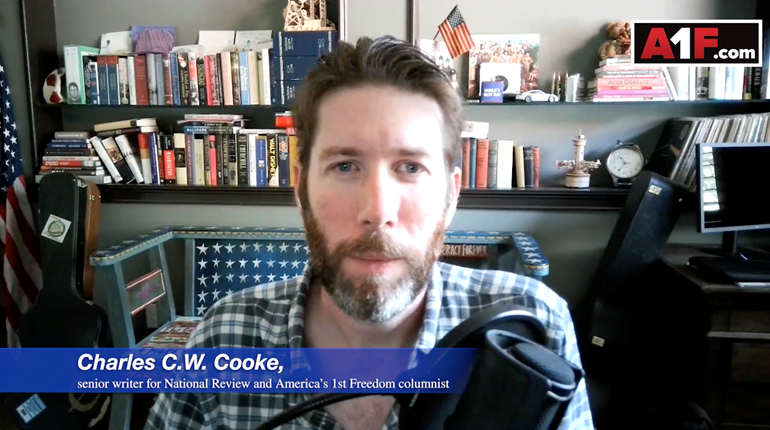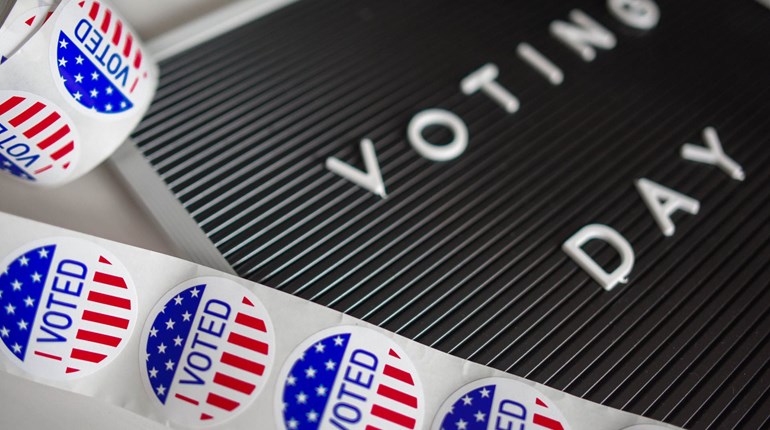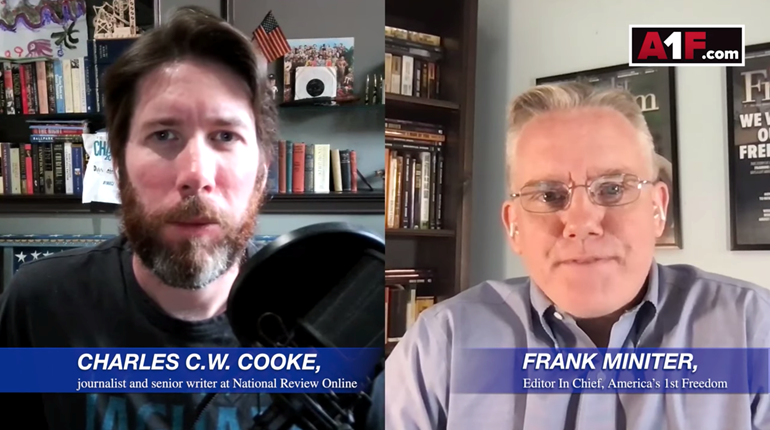

The fact that both District of Columbia v. Heller and McDonald v. Chicago were decided 5-4, rather than 9-0, remains one of the greatest outrages in recent judicial history. Had a single vote gone the other way, the Supreme Court of the United States would have taken it upon itself not merely to render as a dead letter one of the sacred measures within the Constitution’s Bill of Rights, but to rewrite American history in concert.
While the addition of Justice Neil Gorsuch and the nomination of Judge Brett Kavanaugh to the Supreme Court are victories, they only restore a precarious balance.
As the late Justice Antonin Scalia acerbically noted in his majority opinion in Heller, the mental gymnastics that were necessary for the dissenters to reach their peculiar conclusions were worthy of the Mad Hatter. Bluntly put, to nod along approvingly with John Paul Stevens’ dissenting opinion is to accept that the Founding Fathers put into a charter of individual liberties the right to join a state organization over which the federal government has complete control—and, moreover, that they did so using language that was elsewhere applied solely to individual rights. It is to believe that everything we know of the Revolutionary era is wrong, and that the contemporary observers were mistaken when they explained in plain terms what the Constitution meant. And it is to turn the elementary into the complex. Each year, the justices of the Supreme Court are asked to resolve a good number of complicated questions. What the Second Amendment means, however, is not among them.
Given the joy and triumphalism that have marked the days and weeks since Justice Anthony Kennedy announced his retirement, it might seem odd to reflect upon just how close we came to disaster. But in fact, now is the perfect time to see clearly. Indeed, if ever there were a time for vigilance—and for an appreciation of the importance of the long game—it is now, when everything seems to be going so well.
It was a salutary thing indeed that Scalia was replaced by Neil Gorsuch rather than by Merrick Garland, but it should be remembered that, in effect, that switch represented a reprieve rather than an advance. Alas, the same is likely to be true of Kennedy’s replacement—at least as far as the Second Amendment is concerned. Assuming that Brett Kavanaugh (at press time for this issue, confirmation hearings had not yet begun) votes the same way as did Kennedy, the president and Senate will have scored a victory for the Second Amendment. But again, that will be a victory of maintenance rather than of advance.
For now, yes, Heller seems safe. And yet, even after two conservative appointments, it is in truth no safer than it was the day before Scalia died. If the Second Amendment is to be protected for the long run, the composition of the court must first be defended—if Clarence Thomas were to retire at the wrong moment, remember, the court could still flip—and then it must be substantively altered. Before we can breathe, 5-4 must become 6-3, and then 7-2, and so on.
The same rule goes for the network of lower courts, which, in combination with the Supreme Court’s slim constitutionalist majority, currently present the most considerable threat to the integrity of the right to keep and bear arms. In recent years, justices Scalia, Thomas, Alito and Gorsuch have all complained that the lower courts are defying Heller, and that the Supreme Court has abdicated its responsibility to step in. They have been correct to so complain. But when the cat is away, the mice will play—and many judges most certainly have played. Without fear of the Supreme Court’s superintendence, an alarming number of courts have seen fit to step around some of Heller’s key tenets—including, but not limited to, the “in common use” standard and the confirmation that unprotected firearms must be both “dangerous and unusual.”
Unsupervised, the 9th Circuit has tied itself into knots in order to uphold a law that effectively barred the carrying of arms in California; unchecked, the 4th Circuit upheld Maryland’s ban on so-called “assault weapons” by pretending that Heller had excluded almost every gun in existence from its protection; unmonitored, the 7th Circuit issued a ruling that, in the words of the dissent, assumed that “Miller were still the controlling authority and Heller were a mere gloss on it.” Since January of last year, the White House and the Republican Congress have done yeoman’s work in ensuring that departing judges are replaced with figures who are willing to uphold the Supreme Court’s precedents. But there is much yet to be done if the damage caused by eight years of President Barack Obama’s nominees is to be reversed. Just two years of a Republican Senate and White House will not suffice to stem the tide.
... we are not witnessing some glorious final victory in this ongoing fight, nor even looking at a broad shift in power. We are watching the line being held, and possibly moved very slightly in the correct direction.
Which is to say that, ideally, the Republican party must keep its Senate majority—and that, regardless, gun owners must continue to insist that the Senate reject any judge who is willing to jettison the original public meaning of the Second Amendment. It is, of course, absolutely true that the vast majority of the energy behind the recent restoration of the right to keep and bear arms has come from the people, not from the courts. The end of the “assault weapons” ban; the resuscitation of carry rights; the ending of nonsensical policies such as “one gun per month”—these were the result of grassroots efforts, and not of judicial fiat.
Yet it remains the case that not everyone in America enjoys equal access to their unalienable rights, and that, to ensure that they do, the courts are obliged to intervene. If the judiciary backslides, we will end up with a country in which the Second Amendment is in force only in select areas. This is unacceptable. Moreover, because our partisan politics tend to ebb and flow, it is not beyond the realm of possibility that we might at some point in the near future see a committed anti-gun majority in Washington, d.c. If that should happen, the courts must be ready to ensure that any resultant legislation does not transgress the limits imposed by the Constitution.
Lest I be misunderstood, let me be clear in recording that I am thrilled by President Donald Trump’s selection of Kavanaugh. He’s a superb choice, with the right attitude toward both the law in general, and the Second Amendment more specifically. Dissenting in 2011’s Heller v. District of Columbia—a case in which a majority of the three-man panel disgracefully upheld D.C.’s ban on so-called “assault weapons”—Kavanaugh exposed the absurdity of the claim that the most commonly owned rifle in America is somehow exempt from protection.
“In Heller,” Kavanaugh wrote, “the Supreme Court held that handguns—the vast majority of which today are semi-automatic—are constitutionally protected because they have not traditionally been banned and are in common use by law-abiding citizens. There is no meaningful or persuasive constitutional distinction between semi-automatic handguns and semi-automatic rifles.”
And why not? Well, because Heller’s “in common use” standard is binding, and the lower courts are obliged to respect it. “Semi-automatic rifles,” Kavanaugh wrote, “like semi-automatic handguns, have not traditionally been banned and are in common use by law-abiding citizens for self-defense in the home, hunting and other lawful uses. Moreover, semi-automatic handguns are used in connection with violent crimes far more than semi-automatic rifles are. It follows from Heller’s protection of semi-automatic handguns that semi-automatic rifles are also constitutionally protected and that D.C.’s ban on them is unconstitutional.”
This is encouraging for a couple of reasons. The first is because Kavanaugh’s reasoning was wholly devoid of the elementary factual mistakes and deliberately tortured logic that have stained too many post-Heller opinions, and because that bodes well for his future Second Amendment jurisprudence on the Supreme Court. Repeatedly, Kavanaugh echoed Scalia’s insistence from McDonald that judges must evaluate Second Amendment questions with reference to “history and tradition”—that is, to “a body of evidence susceptible of reasoned analysis”—rather than to “a variety of vague ethico-political First Principles whose combined conclusion can be found to point in any direction the judges favor.” Consequently, Kavanaugh rejected the majority’s thumb-on-the-scales “intermediate scrutiny” test, in favor of a more rigorous standard. Eventually, the Supreme Court will be obliged to confirm which standard of review must obtain in all Second Amendment cases. If Heller v. D.C. is any indication, when that moment finally comes, Kavanaugh will stand on the right side of the divide.
Second, this nomination is encouraging because, as an associate justice on the nation’s highest court, it will fall in part to Kavanaugh to ensure that the lower courts are properly upholding precedent. Given that when he himself was obliged to respect precedent, he did so happily, one can safely assume that he will join Gorsuch, Alito and Thomas in wishing to accept and move forward any petitions for certiorari that arise as a result of lower court recalcitrance. Writing in Heller v. D.C., Kavanaugh recorded that it is not the role of the lower courts “to re-litigate Heller or to bend it in any particular direction”; rather, those courts’ “sole job is to faithfully apply Heller and the approach it set forth for analyzing gun bans and regulations.” A Supreme Court that shared that view would represent a marked improvement over the status quo.
Nevertheless, we must be mindful of the fact that we are not witnessing some glorious final victory in this ongoing fight, nor even looking at a broad shift in power. We are watching the line being held, and possibly moved very slightly in the correct direction. Three of the four justices who dissented in McDonald are still on the high court, and they have been joined on the leftward flank by Justice Elena Kagan. Moreover, in the time since Heller was decided, the Democratic Party has become increasingly radical on the question of the right to keep and bear arms.
Although he had an unacceptably cramped view of its scope, Obama actually praised Heller in 2008. “I have always believed that the Second Amendment protects the right of individuals to bear arms,” Obama remarked when the decision was announced, before adding a caveat about “common-sense, effective safety measures” that would eventually become one of his themes. By contrast, Hillary Clinton not only opposed the decision—in 2015, she claimed that “the Supreme Court is wrong on the Second Amendment”—but was utterly incoherent when discussing it, claiming during a debate in 2016 that the issue at stake was whether Congress was allowed to “protect toddlers from guns” (it was not) and insisting simultaneously that she believed in an individual right and that even the most elementary protections of such a right were unacceptable. Given the current direction of Clinton’s party, should we realistically expect its next nominee to be more or less respectful of the individual right to bear arms?
If your answer to that question is “less,” then you will grasp immediately how crucial it is for gun owners to remain awake. It would be supremely ironic if, at the exact moment that a profound change came into reach, its coveters assumed that all was well, and they fell asleep at the switch.
Charles C.W. Cooke is the editor of National Review Online.


































